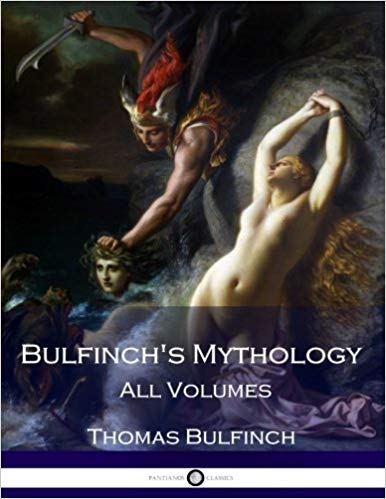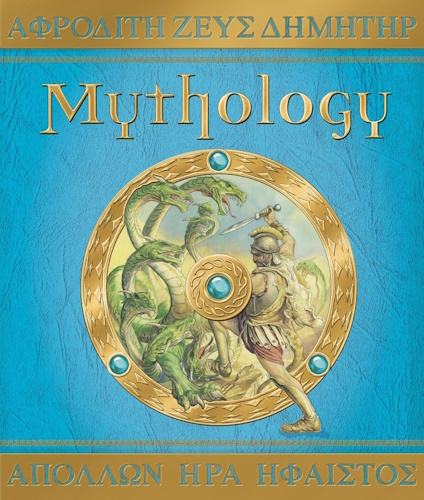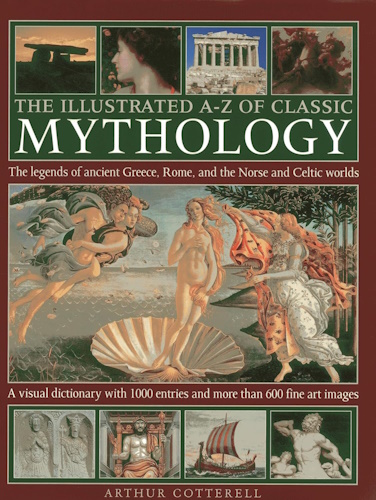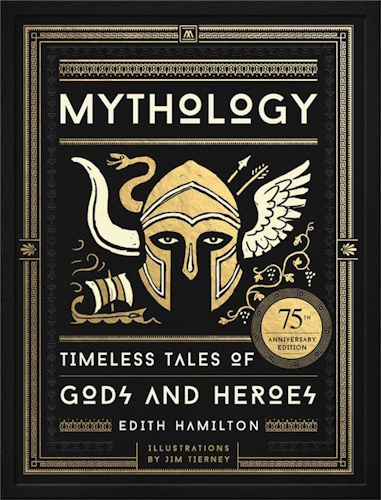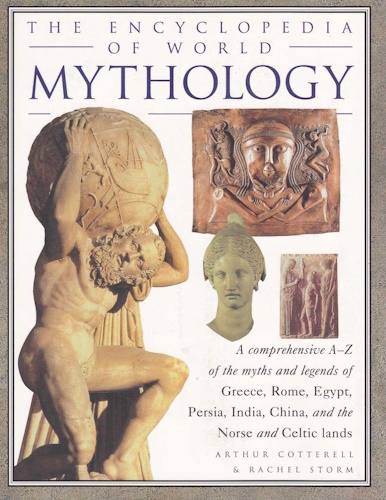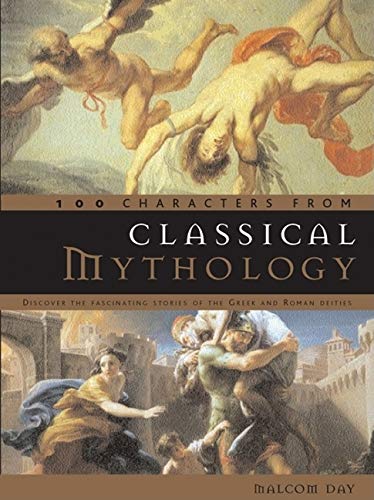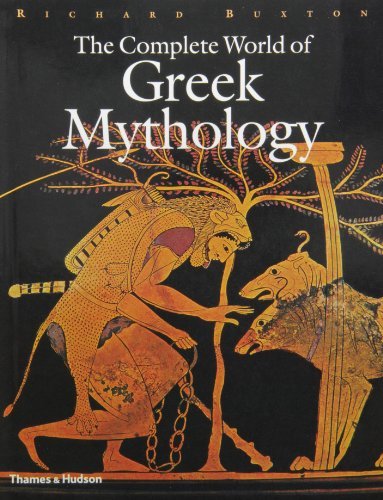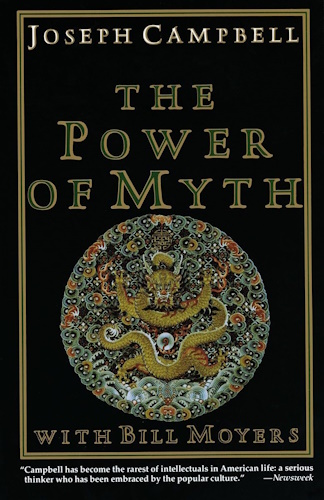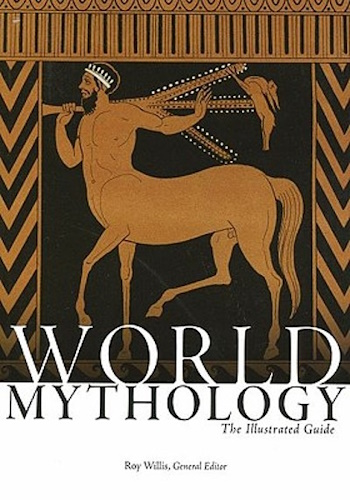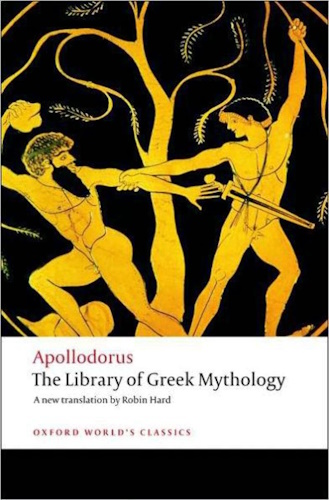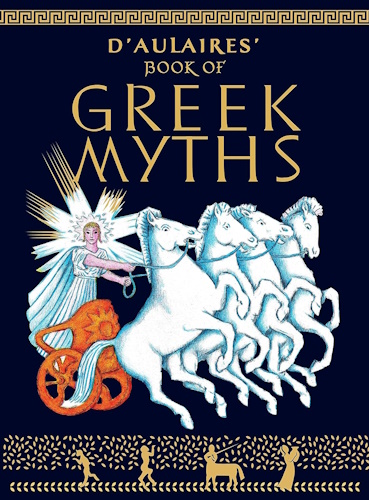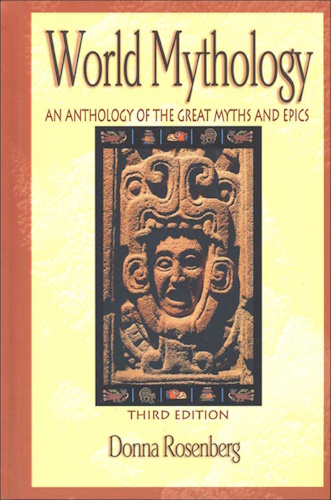
![]()
![]()
Part I.
King Arthur and His Knights.
Chapter I.
Introduction.
ON the decline of the Roman power, about five centuries after Christ, the countries of Northern Europe were left almost destitute of a national government. Numerous chiefs, more or less powerful, held local sway, as far as each could enforce his dominion, and occasionally those chiefs would unite for a common object; but, in ordinary times, they were much more likely to be found in hostility to one another. In such a state of things, the rights of the humbler classes of society were at the mercy of every assailant; and it is plain that, without some check upon the lawless power of the chiefs, society must have relapsed into barbarism. Such checks were found, first, in the rivalry of the chiefs themselves, whose mutual jealousy made them restraints upon one another; secondly, in the influence of the Church, which, by every motive, pure or selfish, was pledged to interpose for the protection of the weak; and lastly, in the generosity and sense of right which, however crushed under the weight of passion and selfishness, dwell naturally in the heart of man. From this last source sprang Chivalry, which framed an ideal of the heroic character, combining invincible strength and valor, justice, modesty, loyalty to superiors, courtesy to equals, compassion to weakness, and devotedness to the Church; an ideal which, if never met with in real life, was acknowledged by all as the highest model for emulation.
The word Chivalry is derived from the French cheval, a horse. The word knight, which originally meant boy or servant, was particularly applied to a young man after he was admitted to the privilege of bearing arms. This privilege was conferred on youths of family and fortune only, for the mass of the people were not furnished with arms. The knight then was a mounted warrior, a man of rank, or in the service and maintenance of some man of rank, generally possessing some independent means of support, but often relying mainly on the gratitude of those whom he served for the supply of his wants, and often, no doubt, resorting to the means which power confers on its possessor.
In time of war the knight was, with his followers, in the camp of his sovereign, or commanding in the field, or holding some castle for him. In time of peace he was of ten in attendance at his sovereign's court, gracing with his presence the banquets and tournaments with which princes cheered their leisure. Or he was traversing the country in quest of adventure, professedly bent on redressing wrongs and enforcing rights, sometimes in fulfilment of some vow of religion or of love. These wandering knights were called knights-errant; they were welcome guests in the castles of the nobility, for their presence enlivened the dulness of those secluded abodes, and they were received with honor at the abbeys, which often owed the best part of their revenues to the patronage of the knights; but if no castle or abbey or hermitage were at hand, their hardy habits made it not intolerable to them to lie down, supperless, at the foot of some wayside cross, and pass the night.
It is evident that the justice administered by such an instrumentality must have been of the rudest description. The force whose legitimate purpose was to redress wrongs, might easily be perverted to inflict them. Accordingly, we find in the romances, which, however fabulous in facts, are true as pictures of manners, that a knightly castle was often a terror to the surrounding country; that its dungeons were full of oppressed knights and ladies, waiting for some champion to appear to set them free, or to be ransomed with money; that hosts of idle retainers were ever at hand to enforce their lord's behests, regardless of law and justice; and that the rights of the unarmed multitude were of no account. This contrariety of fact and theory in regard to chivalry will account for the opposite impressions which exist in men's minds respecting it. While it has been the theme of the most fervid eulogium on the one part, it has been as eagerly denounced on the other. On a cool estimate, we cannot but see reason to congratulate ourselves that it has given way in modern times to the reign of law, and that the civil magistrate, if less picturesque, has taken the place of the mailed champion.
The Training of a Knight.
The preparatory education of candidates for knighthood was long and arduous. At seven years of age the noble children were usually removed from their father's house to the court or castle of their future patron, and placed under the care of a governor, who taught them the first articles of religion, and respect and reverence for their lords and superiors, and initiated them in the ceremonies of a court, They were called pages, valets or varlets, and their office was to carve, to wait at table, and to perform other menial services which were not then considered humiliating. In their leisure hours they learned to dance and play on the harp, were instructed in the mysteries of woods and rivers, that is, in hunting, falconry, and fishing, and in wrestling, tilting with spears, and performing other military exercises on horseback. At fourteen the page became an esquire, and began a course of severer and more laborious exercises. To vault on a horse in heavy armor; to run, to scale walls, and spring over ditches, under the same encumbrance; to wrestle, to wield the battle-axe for a length of time, without raising the visor or taking breath; to perform with grace all the evolutions of horsemanship,– were necessary preliminaries to the reception of knighthood, which was usually conferred at twenty-one years of age, when the young man's education was supposed to be completed. In the meantime, the esquires were no less assiduously engaged in acquiring all those refinements of civility which formed what was in that age called courtesy. The same castle in which they received their education was usually thronged with young persons of the other sex, and the page was encouraged, at a very early age, to select some lady of the court as the mistress of his heart, to whom he was taught to refer all his sentiments, words, and actions. The service of his mistress was the glory and occupation of a knight, and her smiles, bestowed at once by affection and gratitude, were held out as the recompense of his well-directed valor. Religion united its influence with those of loyalty and love, and the order of knighthood, endowed with all the sanctity and religious awe that attended the priesthood, became an object of ambition to the greatest sovereigns.
The ceremonies of initiation were peculiarly solemn. After undergoing a severe fast, and spending whole nights in prayer, the candidate confessed, and received the sacrament. He then clothed himself in snow-white garments, and repaired to the church, or the hall, where the ceremony was to take place, bearing a knightly sword suspended from his neck, which the officiating priest took and blessed, and then returned to him. The candidate then, with folded arms, knelt before the presiding knight, who, after some questions about his motives and purposes in requesting admission, administered to him the oaths, and granted his request. Some of the knights present, sometimes even ladies and damsels, handed to him in succession the spurs, the coat of mail, the hauberk, the armlet and gauntlet, and lastly he girded on the sword. He then knelt again before the president, who, rising from his seat, gave him the "accolade," which consisted of three strokes, with the flat of a sword, on the shoulder or neck of the candidate, accompanied by the words: "In the name of God, of St. Michael, and St. George, I make thee a knight; be valiant, courteous, and loyal!" Then he received his helmet, his shield, and spear; and thus the investiture ended.
Freemen, Villains, Serfs, and Clerks.
The other classes of which society was composed were, first, freemen, owners of small portions of land, independent, though they sometimes voluntarily became the vassals of their more opulent neighbors, whose power was necessary for their protection. The other two classes, which were much the most numerous, were either serfs or villains, both of which were slaves.
The serfs were in the lowest state of slavery. All the fruits of their labor belonged to the master whose land they tilled, and by whom they were fed and clothed.
The villains were less degraded. Their situation seems to have resembled that of the Russian peasants at this day; Like the serfs, they were attached to the soil, and were transferred with it by purchase; but they paid only a fixed rent to the landlord, and had a right to dispose of any surplus that might arise from their industry.
The term clerk was of very extensive import. It comprehended, originally, such persons only as belonged to the clergy, or clerical order, among whom, however, might be found a multitude of married persons, artisans or others. But in process of time a much wider rule was established; every one that could read being accounted a clerk, or clericus, and allowed the "benefit of clergy," that is, exemption from capital and some other forms of punishment, in case of crime.
Tournaments.
The splendid pageant of a tournament between knights, its gaudy accessories and trappings, and its chivalrous regulations, originated in France. Tournaments were repeatedly condemned by the Church, probably on account of the quarrels they led to, and the often fatal results. The "joust," or "just," was different from the tournament. In these, knights fought with their lances, and their object was to unhorse their antagonists; while the tournaments were intended for a display of skill and address in evolutions, and with various weapons, and greater courtesy was observed in the regulations. By these it was forbidden to wound the horse, or to use the point of the sword, or to strike a knight after he had raised his visor, or unlaced his helmet. The ladies encouraged their knights in these exercises; they bestowed prizes, and the conqueror's feats were the theme of romance and song. The stands overlooking the ground, of course, were varied in the shapes of towers, terraces, galleries, and pensile gardens, magnificently decorated with tapestry, pavilions, and banners. Every combatant proclaimed the name of the lady whose servant d'amour he was. He was wont to look up to the stand, and strengthen his courage by the sight of the bright eyes that were raining their influence on him from above. The. knights also carried favors, consisting of scarfs, veils, sleeves, bracelets, clasps,– in short, some piece of female habiliment,– attached to their helmets, shields, or armor. If, during the combat, any of these appendages were dropped or lost, the fair donor would at times send her knight new ones, especially if pleased with his exertions.
Mail Armor.
Mail armor, of which the hauberk is a species, and which derived its name from maille, a French word for mesh, was of two kinds, plate or scale mail, and chain mail. It was originally used for the protection of the body only, reaching no lower than the knees. It was shaped like a carter's frock, and bound round the waist by a girdle. Gloves and hose of mail were afterwards added, and a hood, which, when necessary, was drawn over the head, leaving the face alone uncovered. To protect the skin from the impression of the iron network of the chain mail, a quilted lining was employed, which, however, was insufficient, and the bath was used to efface the marks of the armor.
The hauberk was a complete covering of double chain mail. Some hauberks opened before, like a modern coat; others were closed like a shirt.
The chain mail of which they were composed was formed by a number of iron links, each link having others inserted into it, the whole exhibiting a kind of network, of which (in some instances at least) the meshes were circular, with each link separately riveted.
The hauberk was proof against the most violent blow of a sword; but the point of a lance might pass through the meshes, or drive the iron into the flesh. To guard against this, a thick and well-stuffed doublet was worn underneath, under which was commonly added an iron breastplate. Hence the expression "to pierce both plate and mail," so common in the earlier poets.
Mail armor continued in general use till about the year 1300, when it was gradually supplanted by plate armor, or suits consisting of pieces or plates of solid iron, adapted to the different parts of the body.
Shields were generally made of wood, covered with leather, or some similar substance. To secure them, in some sort, from being cut through by the sword, they were surrounded with a hoop of metal.
Helmets.
The helmet was composed of two parts: the headpiece, which was strengthened within by several circles of iron; and the visor, which, as the name implies, was a sort of grating to see through, so contrived as, by sliding in a groove, or turning on a pivot, to be raised or lowered at pleasure. Some helmets had a further improvement called a bever, from the Italian bevere, to drink. The ventayle, or "air-passage," is another name for this.
To secure the helmet from the possibility of falling, or of being struck off, it was tied by several laces to the meshes of the hauberk; consequently, when a knight was overthrown, it was necessary to undo these laces before he could be put to death; though this was sometimes effected by lifting up the skirt of the hauberk, and stabbing him in the belly. The instrument of death was a small dagger, worn on the right side.
Romances.
In ages when there were no books, when noblemen and princes themselves could not read, history or tradition was monopolized by the story-tellers. They inherited, generation after generation, the wondrous tales of their predecessors, which they retailed to the public with such additions of their own as their acquired information supplied them with. Anachronisms became of course very common, and errors of geography, of locality, of manners, equally so. Spurious genealogies were invented, in which Arthur and his knights, and Charlemagne and his paladins, were made to derive their descent from AEneas, Hector, or some other of the Trojan heroes.
With regard to the derivation of the word Romance, we trace it to the fact that the dialects which were formed in Western Europe, from the admixture of Latin with the native languages, took the name of Langue Romaine. The French language was divided into two dialects. The river Loire was their common boundary. In the provinces to the south of that river the affirmative, yes, was expressed by the word oc; in the north it was called oil (oui); and hence Dante has named the southern language langue d'oc, and the northern langue d'oil. The latter, which was carried into England by the Normans, and is the origin of the present French, may be called the French Romane; and the former the Provencal, or Provencial Romane, because it was spoken by the people of Provence and Languedoc, southern provinces of France.
These dialects were soon distinguished by very opposite characters. A soft and enervating climate, a spirit of commerce encouraged by an easy communication with other maritime nations, the influx of wealth, and a more settled government, may have tended to polish and soften the diction of the Provencials, whose poets, under the name of Troubadours, were the masters of the Italians, and particularly of Petrarch. Their favorite pieces were Sirventes (satirical pieces), love-songs, and Tensons, which last were a sort of dialogue in verse between two poets, who questioned each other on some refined points of love's casuistry. It seems the Provencials were so completely absorbed in these delicate questions as to neglect and despise the composition of fabulous histories of adventure and knighthood, which they left in a great measure to the poets of the northern part of the kingdom, called Trouveurs.
At a time when chivalry excited universal admiration, and when all the efforts of that chivalry were directed against the enemies of religion, it was natural that literature should receive the same impulse, and that history and fable should be ransacked to furnish examples of courage and piety that might excite increased emulation. Arthur and Charlemagne were the two heroes selected for this purpose. Arthur's pretensions were that he was a brave, though not always a successful warrior; he had withstood with great resolution the arms of the infidels, that is to say, of the Saxons, and his memory was held in the highest estimation by his countrymen, the Britons, who carried with them into Wales, and into the kindred country of Armorica, or Brittany, the memory of his exploits, which their national vanity insensibly exaggerated, till the little prince of the Silures (South Wales) was magnified into the conqueror of England, of Gaul, and of the greater part of Europe. His genealogy was gradually carried up to an imaginary Brutus, and to the period of the Trojan war, and a sort of chronicle was composed in the Welsh, or Armorican language, which, under the pompous title of the History of the Kings of Britain, was translated into Latin by Geoffrey of Monmouth, about the year 1150. The Welsh critics consider the material of the work to have been an older history, written by St. Talian, Bishop of St. Asaph, in the seventh century.
As to Charlemagne, though his real merits were sufficient to secure his immortality, it was impossible that his holy wars against the Saracens should not become a favorite topic for fiction. Accordingly, the fabulous history of these wars was written, probably towards the close of the eleventh century, by a monk, who, thinking it would add dignity to his work to embellish it with a contemporary name, boldly ascribed it to Turpin, who was Archbishop of Rheims about the year 773.
These fabulous chronicles were for a while imprisoned in languages of local only or of professional access. Both Turpin and Geoffrey might indeed be read by ecclesiastics, the sole Latin scholars of those times, and Geoffrey's British original would contribute to the gratification of Welshmen; but neither could become extensively popular till translated into some language of general and familiar use. The Anglo–Saxon was at that time used only by a conquered and enslaved nation; the Spanish and Italian languages were not yet formed; the Norman French alone was spoken and understood by the nobility in the greater part of Europe, and therefore was a proper vehicle for the new mode of composition.
That language was fashionable in England before the Conquest, and became, after that event, the only language used at the court of London. As the various conquests of the Normans, and the enthusiastic valor of that extraordinary people, had familiarized the minds of men with the most marvellous events, their poets eagerly seized the fabulous legends of Arthur and Charlemagne, translated them into the language of the day, and soon produced a variety of imitations. The adventures attributed to these monarchs, and to their distinguished warriors, together with those of many other traditionary or imaginary heroes, composed by degrees that formidable body of marvellous histories which, from the dialect in which the most ancient of them were written, were called Romances.
Metrical Romances.
The earliest form in which romances appear is that of a rude kind of verse. In this form it is supposed they were sung or recited at the feasts of princes and knights in their baronial halls. The following specimen of the language and style of Robert de Beauvais, who flourished in 1257, is from Sir Walter Scott's Introduction to the Romance of Sir Tristram:
"Ne voil pas emmi dire,
Ici diverse la matyere,
Entre ceus qui solent cunter,
E de la cunte Tristran parler."
"I will not say too much about it,
So diverse is the matter,
Among those who are in the habit of telling
And relating the story of Tristran."
This is a specimen of the language which was in use among the nobility of England in the ages immediately after the Norman conquest. The following is a specimen of the English that existed at the same time among the common people. Robert de Brunne, speaking of his Latin and French authorities, says:–
"Als thai haf wryten and sayd
Haf I alle in myn Inglis layd,
In symple speeche as I couthe,
That is lightest in manne's mouthe.
Alle for the luf of symple men,
That strange Inglis cannot ken."
The "strange Inglis" being the language of the previous specimen.
It was not till toward the end of the thirteenth century that the prose romances began to appear. These works generally began with disowning and discrediting the sources from which in reality they drew their sole information. As every romance was supposed to be a real history, the compilers of those in prose would have forfeited all credit if they had announced themselves as mere copyists of the minstrels. On the contrary, they usually state that, as the popular poems upon the matter in question contain many "lesings," they had been induced to translate the real and true history of such or such a knight from the original Latin or Greek, or from the ancient British or Armorican authorities, which authorities existed only in their own assertion.
A specimen of the style of the prose romance may be found in the following extract from one of the most celebrated and latest of them, the Morte d'Arthur of Sir Thomas Mallory, of the date of 1485. From this work much of the contents of this volume has been drawn, with as close an adherence to the original style as was thought consistent with our plan of adapting our narrative to the taste of modern readers.
"It is notoyrly knowen thorugh the vnyuersal world that there been ix worthy and the best that ever were. That is to wete thre paynyms, thre Jewes, and thre crysten men. As for the paynyms, they were tofore the Incarnacyon of Cryst whiche were named, the fyrst Hector of Troye; the second Alysaunder the grete, and the thyrd Julyus Cezar, Emperour of Rome, of whome thystoryes ben well kno and had. And as for the thre Jewes whyche also were tofore thyncarnacyon of our Lord, of whome the fyrst was Duc Josue, whyche brought the chyldren of Israhel into the londe of beheste; the second Dauyd, kyng of Jherusalem, and the thyrd Judas Machabeus; of these thre the byble reherceth al theyr noble hystoryes and actes. And sythe the sayd Incarnacyon haue ben the noble crysten men stalled and admytted thorugh the vnyuersal world to the nombre of the ix beste and worthy, of whome was fyrst the noble Arthur, whose noble actes I purpose to wryte in this present book here folowyng. The second was Charlemayn, or Charles the grete, of whome thystorye is had in many places both in frensshe and englysshe, and the thyrd and last was Godefray of boloyn."
The Mabinogeon.
It has been well known to the literati and antiquarians of Europe, that there exist in the great public libraries voluminous manuscripts of romances and tales once popular, but which on the invention of printing had already become antiquated and fallen into neglect. They were therefore never printed, and seldom perused even by the learned, until about half a century ago, when attention was again directed to them, and they were found very curious monuments of ancient manners, habits, and modes of thinking. Several have since been edited, some by individuals, as Sir Walter Scott and the poet Southey, others by antiquarian societies. The class of readers which could be counted on for such publications was so small that no inducement of profit could be found to tempt editors and publishers to give them to the world. It was therefore only a few, and those the most accessible, which were put in print. There was a class of manuscripts of this kind which were known, or rather suspected, to be both curious and valuable, but which it seemed almost hopeless ever to see in fair printed English. These were the Welsh popular tales, called Mabinogeon, a plural word, the singular being Mabinogi, a tale. Manuscripts of these were contained in the Bodleian Library at Oxford, and elsewhere, but the difficulty was to find translators and editors. The Welsh is a spoken language among the peasantry of Wales, but is entirely neglected among the learned, unless they are natives of the principality. Of the few Welsh scholars none were found who took sufficient interest in this branch of learning to give these productions to the English public. Southey and Scott, and others who, like them, loved the old romantic legends of their country, often urged upon the Welsh literati the duty of reproducing the Mabinogeon. Southey, in the preface to his edition of Morte d'Arthur, says: "The specimens which I have seen are exceedingly curious; nor is there a greater desideratum in British literature than an edition of these tales, with a literal version, and such comments as Mr. Davies of all men is best qualified to give. Certain it is that many of the Round Table fictions originated in Wales, or in Bretagne, and probably might still be traced there."
Again, in a letter to Sir Charles W. W. Wynn, dated 1819, he says:–
"I begin almost to despair of ever seeing more of the Mabinogeon; and yet, if some competent Welshman could be found to edit it carefully, with as literal a version as possible, I am sure it might be made worth his while by a subscription, printing a small edition at a high price, perhaps two hundred at five guineas. I myself would gladly subscribe at that price per volume for such an edition of the whole of your genuine remains in prose and verse. Till some such collection is made, the ‘gentlemen of Wales' ought to be prohibited from wearing a leek; ay, and interdicted from toasting cheese also. Your bards would have met with better usage if they had been Scotchmen."
Sharon Turner and Sir Walter Scott also expressed a similar wish for the publication of the Welsh manuscripts. The former took part in an attempt to effect it, through the instrumentality of a Mr. Owen, a Welshman, but, we judge, by what Southey says of him, imperfectly acquainted with English. Southey's language is, "William Owen lent me three parts of the Mabinogeon, delightfully translated into so Welsh an idiom and syntax that such a translation is as instructive as an original." In another letter he adds, "Let Sharon make his language grammatical, but not alter their idiom in the slightest point."
It is possible Mr. Owen did not proceed far in an undertaking which, so executed, could expect but little popular patronage. It was not till an individual should appear possessed of the requisite knowledge of the two languages, of enthusiasm sufficient for the task, and of pecuniary resources sufficient to be independent of the booksellers and of the reading public, that such a work could be confidently expected. Such an individual has, since Southey's day and Scott's, appeared in the person of Lady Charlotte Guest, an English lady united to a gentleman of property in Wales, who, having acquired the language of the principality, and become enthusiastically fond of its literary treasures, has given them to the English reader, in a dress which the printer's and the engraver's arts have done their best to adorn. In four royal octave volumes containing the Welsh originals, the translation, and ample illustrations from French, German, and other contemporary and affiliated literature, the Mabinogeon is spread before us. To the antiquarian and the student of language and ethnology an invaluable treasure, it yet can hardly, in such a form, win its way to popular acquaintance. We claim no other merit than that of bringing it to the knowledge of our readers, of abridging its details, of selecting its most attractive portions, and of faithfully preserving throughout the style in which Lady Guest has clothed her legends. For this service we hope that our readers will confess we have laid them under no light obligation.
-
Urantia Book, 44:0.11 - The Celestial Artisans
Never in your long ascendancy will you lose the power to recognize your associates of former existences. Always, as you ascend inward in the scale of life, will you retain the ability to recognize and fraternize with the fellow beings of your previous and lower levels of experience. Each new translation or resurrection will add one more group of spirit beings to your vision range without in the least depriving you of the ability to recognize your friends and fellows of former estates.
-
Princess Bride 1987 Wallace Shawn (Vizzini) and Mandy Patinkin (Inigo Montoya)
Vizzini: HE DIDN'T FALL? INCONCEIVABLE.
Inigo Montoya: You keep using that word. I do not think it means what you think it means. -
Urantia Book, 117:4.14 - The Finite God
And here is mystery: The more closely man approaches God through love, the greater the reality -- actuality -- of that man. The more man withdraws from God, the more nearly he approaches nonreality -- cessation of existence. When man consecrates his will to the doing of the Father's will, when man gives God all that he has, then does God make that man more than he is.
-
Urantia Book, 167:7.4 - The Talk About Angels
"And do you not remember that I said to you once before that, if you had your spiritual eyes anointed, you would then see the heavens opened and behold the angels of God ascending and descending? It is by the ministry of the angels that one world may be kept in touch with other worlds, for have I not repeatedly told you that I have other sheep not of this fold?"
-
Urantia Book, Foreword - 0:12.12 - The Trinities
But we know that there dwells within the human mind a fragment of God, and that there sojourns with the human soul the Spirit of Truth; and we further know that these spirit forces conspire to enable material man to grasp the reality of spiritual values and to comprehend the philosophy of universe meanings. But even more certainly we know that these spirits of the Divine Presence are able to assist man in the spiritual appropriation of all truth contributory to the enhancement of the ever-progressing reality of personal religious experience—God-consciousness.
-
Urantia Book, 1:4.3 - The Mystery Of God
When you are through down here, when your course has been run in temporary form on earth, when your trial trip in the flesh is finished, when the dust that composes the mortal tabernacle "returns to the earth whence it came"; then, it is revealed, the indwelling "Spirit shall return to God who gave it." There sojourns within each moral being of this planet a fragment of God, a part and parcel of divinity. It is not yet yours by right of possession, but it is designedly intended to be one with you if you survive the mortal existence.
-
Urantia Book, 1:4.1 - The Mystery Of God
And the greatest of all the unfathomable mysteries of God is the phenomenon of the divine indwelling of mortal minds. The manner in which the Universal Father sojourns with the creatures of time is the most profound of all universe mysteries; the divine presence in the mind of man is the mystery of mysteries.
-
Urantia Book, 1:4.6 - The Mystery Of God
To every spirit being and to every mortal creature in every sphere and on every world of the universe of universes, the Universal Father reveals all of his gracious and divine self that can be discerned or comprehended by such spirit beings and by such mortal creatures. God is no respecter of persons, either spiritual or material. The divine presence which any child of the universe enjoys at any given moment is limited only by the capacity of such a creature to receive and to discern the spirit actualities of the supermaterial world.
-
Urantia Book, 11:0.1 - The Eternal Isle Of Paradise
Paradise is the eternal center of the universe of universes and the abiding place of the Universal Father, the Eternal Son, the Infinite Spirit, and their divine co-ordinates and associates. This central Isle is the most gigantic organized body of cosmic reality in all the master universe. Paradise is a material sphere as well as a spiritual abode. All of the intelligent creation of the Universal Father is domiciled on material abodes; hence must the absolute controlling center also be material, literal. And again it should be reiterated that spirit things and spiritual beings are real.
-
Urantia Book, 50:6.4 - Planetary Culture
Culture presupposes quality of mind; culture cannot be enhanced unless mind is elevated. Superior intellect will seek a noble culture and find some way to attain such a goal. Inferior minds will spurn the highest culture even when presented to them ready-made.
-
Urantia Book, 54:1.6 - True And False Liberty
True liberty is the associate of genuine self-respect; false liberty is the consort of self-admiration. True liberty is the fruit of self-control; false liberty, the assumption of self-assertion. Self-control leads to altruistic service; self-admiration tends towards the exploitation of others for the selfish aggrandizement of such a mistaken individual as is willing to sacrifice righteous attainment for the sake of possessing unjust power over his fellow beings.
-
Urantia Book, 54:1.9 - True And False Liberty
How dare the self-willed creature encroach upon the rights of his fellows in the name of personal liberty when the Supreme Rulers of the universe stand back in merciful respect for these prerogatives of will and potentials of personality! No being, in the exercise of his supposed personal liberty, has a right to deprive any other being of those privileges of existence conferred by the Creators and duly respected by all their loyal associates, subordinates, and subjects.
-
Urantia Book, 54:1.8 - True And False Liberty
There is no error greater than that species of self-deception which leads intelligent beings to crave the exercise of power over other beings for the purpose of depriving these persons of their natural liberties. The golden rule of human fairness cries out against all such fraud, unfairness, selfishness, and unrighteousness.
